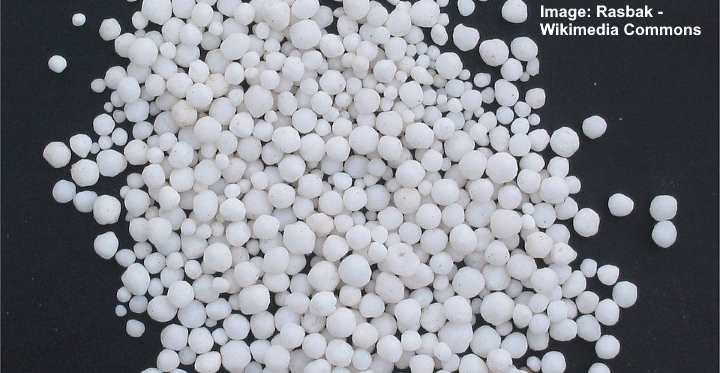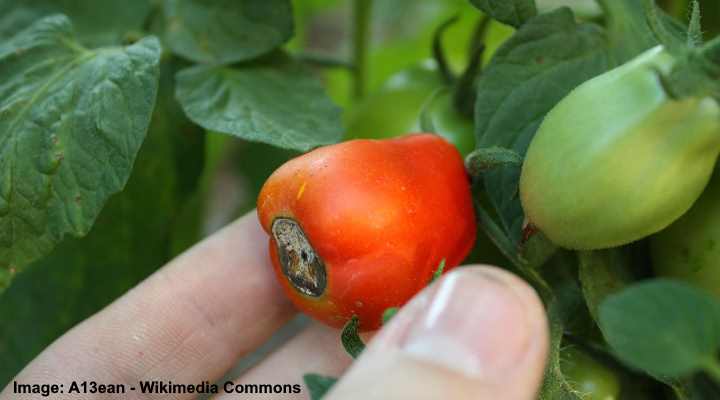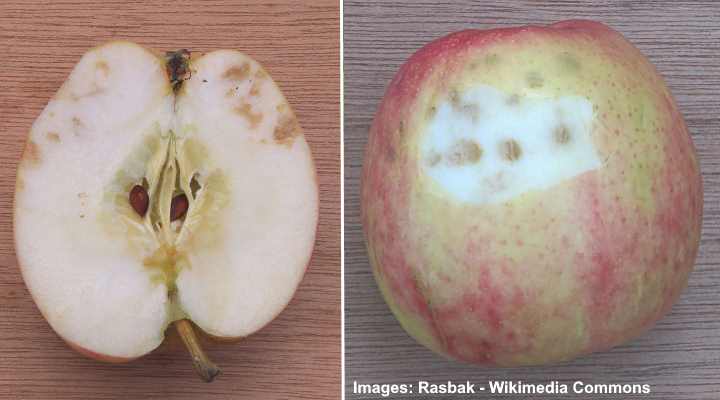Calcium Nitrate Fertilizer: How to Use it to Grow Fruit and Vegetables

Calcium nitrate fertilizer is a water-soluble source of calcium and nitrogen for growing plants. Also called Calcium Ammonium Nitrate (CAN), this fertilizer contains the essential nutrients that help plants grow well. Plants that get the appropriate amount of nitrogen and calcium produce better fruit and are also more resistant to pests and disease. You can apply calcium nitrate as a foliar spray or soil fertilizer.
This article is a guide to using calcium nitrate to fertilize on your fruit and vegetables to ensure they grow well.
What is Calcium Nitrate?

Calcium nitrate fertilizer is also called Calcium Ammonium Nitrate (CAN)
Calcium nitrate is a combination of calcium and ammonium nitrate—a source of nitrogen. Also called Calcium Ammonium Nitrate (CAN), this product is used as a nitrogen fertilizer in agriculture. Calcium nitrate reduces soil acidity and improves the uptake of calcium, potassium, and magnesium from the soil. The benefit of using calcium nitrate as fertilizer is that it boosts calcium and nitrogen levels simultaneously in plants to encourage healthy growth.
Calcium nitrate fertilizer looks like fine, white to light gray granules that you mix with water before fertilizing plants.
Using calcium nitrate spray fertilizers can help address many plant growing issues. Nitrogen—together with phosphorus and potassium—is a vital nutrient for plant growth. Calcium (Ca) is also essential for growing plants because it helps plants develop healthy leaves, buds, and fruit.
How is Calcium Nitrate Made?
Calcium ammonium nitrate is made by a chemical process to create a nitrogen fertilizer. The result is an odorless granules that you can use to fertilize plants. To make calcium nitrate fertilizer for your garden, you only need to combine two to four tablespoons with a gallon (3.8 l) of water and spray on leaves.
Calcium nitrate fertilizer is made up of 15.5% nitrogen in the form of ammonium nitrogen and 19% calcium. As a fertilizer, calcium nitrate has a Nitrogen Phosphorus Potassium (NPK) ratio of 15.5-0-0 + 19% Calcium.
Because calcium nitrate is the only water-soluble form of calcium, it’s an essential spray fertilizer to boost plants’ nitrogen and calcium levels.
When to Use Calcium Nitrate Fertilizer
Calcium nitrate is a useful fertilizer for pepper plants, tomatoes, and other greenhouse crops. Using calcium nitrate in hydroponics “feeds” plants that grow in water, giving them the essential nutrients they need to grow. Some flowering garden plants such as roses and gerbera also benefit from calcium ammonium nitrate solutions.
Calcium is vital for plant health because it helps plants develop correctly. Often, plants lacking in calcium have curled leaves with brown tips. Calcium deficient plants also have trouble growing healthy blossoms, and their fruit can look and taste bad.
Nitrogen is crucial for plant photosynthesis and growth. Typically, plants with a nitrogen deficiency grow slowly, have pale-colored leaves and sparse foliage. However, just addressing a nitrogen deficiency by adding ammonium nitrate can inhibit the amount of calcium plants absorb. In other words, too much nitrogen can cause calcium deficiency.
Some other scientific studies show that calcium deficiencies can result in reduced nitrogen uptake.
Plants That Benefit from Calcium Nitrate Fertilizer
You can use calcium nitrate fertilizer sprays for most plants. Typically, fruit trees or vegetable plants benefit from calcium and nitrogen fertilizers. Some examples are apples, citrus trees, peppers, lettuce, eggplants, broccoli, and spinach.
One study found that using calcium nitrate fertilizer increased the quality and yield of certain orange trees.
The results of other studies on the benefits of calcium nitrate fertilizer show that roses grown in hydroponic gardening produced better flowers and stronger stems. Similar results were seen when using calcium nitrate to fertilize gerbera plants.
The Benefits of Calcium Nitrate Fertilizer
Fertilizing plants with calcium and nitrogen can encourage vigorous plant growth, healthy foliage, and better fruit. Most gardeners realize that nitrogen is vital for growing lush, green plants. However, calcium is equally as essential to encourage plant development and protect them from disease.
Let’s look in more detail at how calcium nitrate can benefit garden and greenhouse plants.
Calcium Nitrate Helps Prevent Plant Disease
Calcium nitrate boosts calcium levels in plants, making them more robust and resistant to disease. Calcium deficiencies in fruit-producing plants can cause blossom end rot, cork spot, and bitter pits in apples. Spraying tomato plants or apple tree leaves with calcium nitrate can prevent calcium-related growth issues.
Here are three common plants diseases that calcium nitrate can help avoid:
Cork spot is a common apple tree disease related to a lack of calcium. Cork spot looks like discolored dimples on apples. This fruit disease affects the appearance of apples.
Bitter pits develop in apples if there’s an underlying calcium deficiency. Apples with bitter pit have black spots on the skin and flesh. These apples have an unappetizing bitter flavor.
Blossom end rot can affect many fruit-bearing plants such as tomatoes, eggplants, pepper, and squash. As the fruits and vegetables grow, they develop a rotten black end and are inedible.
Calcium Nitrate Fertilizer Prevents Calcium Deficiency in Plants
Applying calcium nitrate to soil or spraying on foliage can prevent calcium deficiencies. Calcium is a vital element in soil, and plants need to absorb it to develop properly. In many cases, spraying calcium nitrate is more effective than adding it to the ground as it works faster.
Calcium deficiency is common in sandy or coarse soils, which are typically overly acidic. Also, using too much fertilizer can result in a lack of calcium in the ground. It’s also vital to boost soil calcium levels from time to time.
Some plants are more susceptible to calcium deficiencies. For example, heat stress can deplete calcium levels in tomatoes. This results in flowers that drop prematurely, curled leaves, and blossom end rot.
If you have apple trees showing signs of a calcium deficiency, then applying ammonium calcium nitrate as a foliar spray can help address the problem of cork spot or bitter pit.
Calcium Nitrate Helps Prevent Nitrogen Deficiency in Plants
Nitrogen is one of the three primary nutrients required for plant growth. Signs of nitrogen deficiencies in plants are slow growth, no new growth, yellowing leaves, and sparse foliage. Of course, you can add a nitrogen-rich fertilizer to address a deficiency. But calcium nitrate fertilizer is more effective.
Overusing nitrogen in the soil can inhibit plants’ calcium uptake. So, even though your soil seems rich in calcium, plants could suffer because they can’t absorb enough of the nutrient. So, you can use a calcium-rich fertilizer (NPK 15.5-0-0 + 19% Ca) to fix nitrogen problems without affecting calcium levels.
How to Use Calcium Nitrate Fertilizer (Ammonium Calcium Nitrate)
The best way to use calcium nitrate as a fertilizer is to spray it on plant leaves. You can correct calcium and nitrogen deficiencies by applying calcium ammonium nitrate to the soil; however, that takes too long for it to be effective.
Before treating plants in your greenhouse or garden for calcium deficiencies, it’s a good idea to get your soil tested. The easiest way is to buy a calcium (Ca2+) meter, like this one, to check calcium levels.
Use calcium nitrate as a foliar spray to increase calcium and nitrogen levels. Mix 2 to 4 tablespoons of calcium nitrate with 1 gallon (3.8 l) of water. Fill a pressure spray bottle with the solution and liberally spray plant or tree leaves to correct calcium deficiencies.
To use calcium nitrate in the soil, use about 1 lb. (0.45 kg) of dry fertilizer for every 100 ft. (30 m) length of vegetable rows. Work the calcium fertilizer into the root growing area. Then water the area well to help rectify calcium and nitrogen deficiencies. As a word of caution—avoid letting the powder contact wet foliage.
Top tip to correct calcium deficiencies in individual plants: Use about 1 level tablespoon of calcium nitrate in the soil for any particular plant showing signs of a calcium deficiency.
The Signs of Calcium Deficiency in Plants
Poor foliage growth, lack of new leaves, dead buds, and dimpled fruit and vegetables are just some signs your plants have a calcium deficiency. Calcium deficiencies can happen when there’s not enough calcium in the soil. Too much nitrogen also affects calcium uptake and causes calcium depletion in plants.
Your plants could be showing tell-tale signs of needing more calcium. Here are a few things to look for:
Low calcium levels cause stunted or weak plant growth
You may notice that calcium-deficient plants don’t grow well. Poor growth happens as calcium deficiencies cause tissue injury and death. You will generally see that new leaves at the top of the plant are affected first. Plants lacking calcium typically have sparse foliage and shorter height.
Lack of calcium damages leaves
New leaves in plants with a calcium deficiency typically have a crinkled appearance. The newer leaves can start to curl or develop brown margins and tips. The injury to foliage can also cause leaf spots or even holes in foliage.
Calcium deficiency causes root damage
Calcium helps roots extend and grow to provide the plant with nutrients. Without sufficient calcium, roots stop growing and become stunted. And stunted roots result in weak plant growth as essential nutrients can’t get to the leaves, buds, and fruit. The roots may look brown and mushy and develop root rot disease such as Pythium.
Low calcium levels cause blossom end rot

Blossom end rot caused by calcium deficiency on a tomato
Blossom end rot looks like a slimy black lesion on the blossom end of the fruit. This causes fruit damage, making fruit inedible or unappetizing. Usually, affected fruits are smaller than they should.
If you notice fruit with blossom end rot, it’s vital to remove damaged fruit and treat the plant with the correct calcium nitrate dosage. If you spray the leaves to correct the calcium deficiency fast, your plant should start producing healthy fruit.
Bitter pits in apples

A close up image of bitter pits in an apple
Calcium deficiency is closely related to bitter pit or blotchy cork in apples. The apples have small black spots on the skin and in the flesh. This disease results in apples with leathery skin, a spongy texture, and a bitter taste.
Suppose your apple trees start producing apples with bitter pit. In that case, it’s vital to treat the fruit tree with a calcium nitrate foliar spray as soon as possible.
Applying calcium nitrate to the soil won’t help save this year’s crop. But you can add it to the ground in February to prevent bitter pit. Use a calcium nitrate dose of 1/2 lb. (230 g) per year of the tree’s growth. Apply to the apple tree’s root area to sort out calcium deficiencies before buds start growing on the apple tree.
Where to Buy Calcium Nitrate
Most garden centers and online stores sell calcium nitrate fertilizer (15.5-0-0 + 19%), like this one. The white granular fertilizer is relatively cheap to buy, and you mix it with water to attain the correct dosage.
Other Ways to Add Calcium to Your Garden Soil
You can amend soil with lime, gypsum, or wood ashes to increase soil calcium levels. Amending the ground in spring before planting is an effective way to prevent calcium deficiencies. If you need a quick-fix to correct any calcium-related growing issues during the growing season, use the foliar spray.
Here are some ways to boost the amount of calcium in the soil:
Agricultural Lime (Calcium carbonate)
Crushed limestone is the best natural source of calcium for your greenhouse or garden soil. You can buy lime in most garden centers or online stores such as Amazon, like this one. A soil test will help you determine how much lime to add to your vegetable patch or fruit trees.
When using lime, remember that it raises pH levels, making your soil more alkaline. However, in acidic, sandy soil, adding lime to increase calcium can also help balance its pH level.
Dolomite Lime
Dolomite lime can help address calcium soil deficiencies, especially if it lacks magnesium. Dolomite lime is a combination of calcium carbonate and magnesium carbonate. However, dolomite lime also increases the ground’s pH levels. So, it may not be suitable for all gardens.
Related reading: How to use Epsom salt (magnesium sulfate) as a plant fertilizer.
Gypsum (Calcium sulfate)
You can remedy calcium deficiencies in your soil with gypsum without raising the pH. Gypsum is also an excellent soil amendment to loosen clay soil and neutralize salt in coastal areas.
Wood ashes (Calcium carbonate)
Wood ash from burned hardwood contains many nutrients beneficial for plant growth—including calcium. Wood ash also “feeds” the soil by adding potassium, boron, and phosphorus.
One of the problems with wood ash is that it doesn’t contain as much calcium as lime. But similar to lime, wood ash makes your soil more alkaline. So, you might end up raising the pH level too much to achieve the desired calcium boost.
Related articles:
- The Best Organic Lawn Fertilizers
- The Best Indoor Plant Fertilizers
- Pros and Cons of Using Epsom Salt in the Garden
